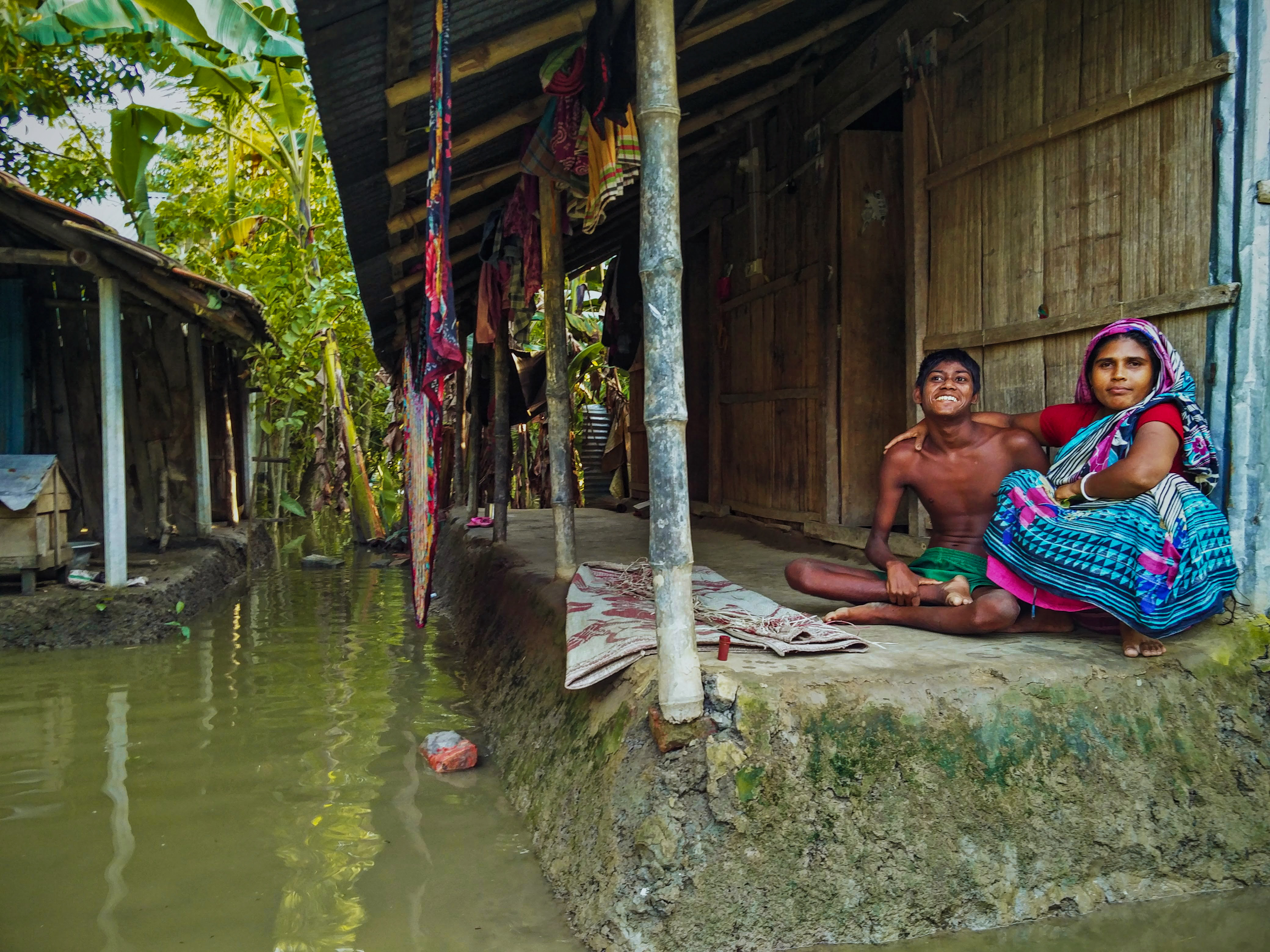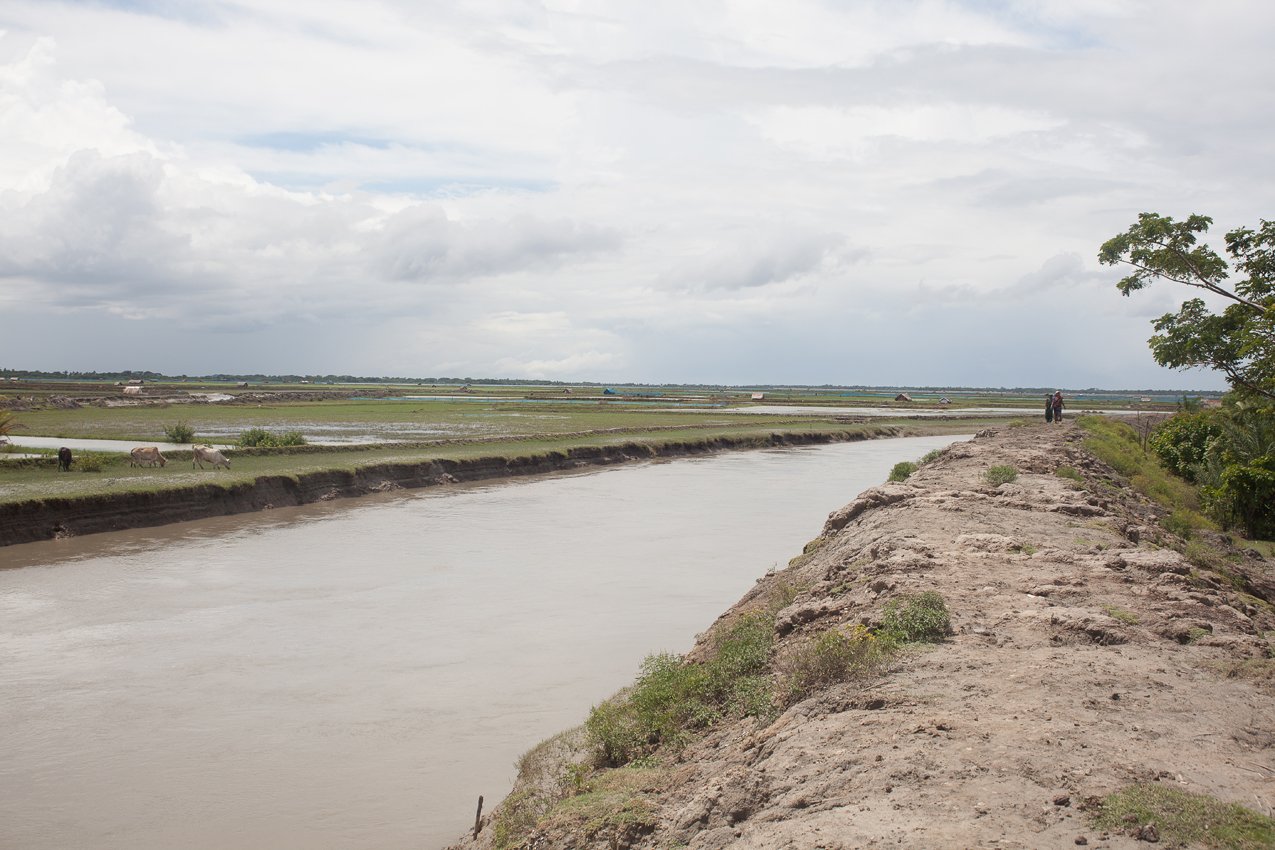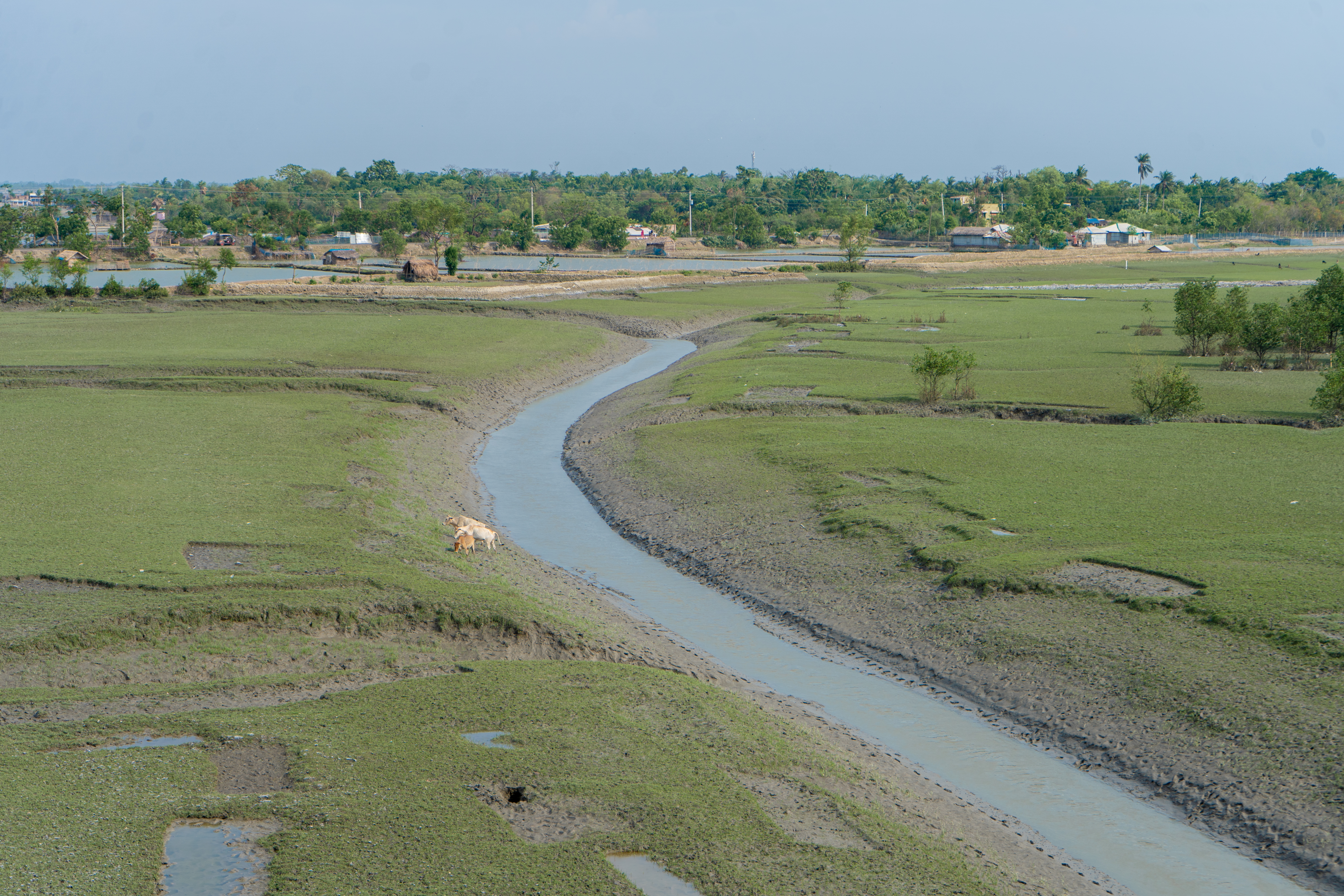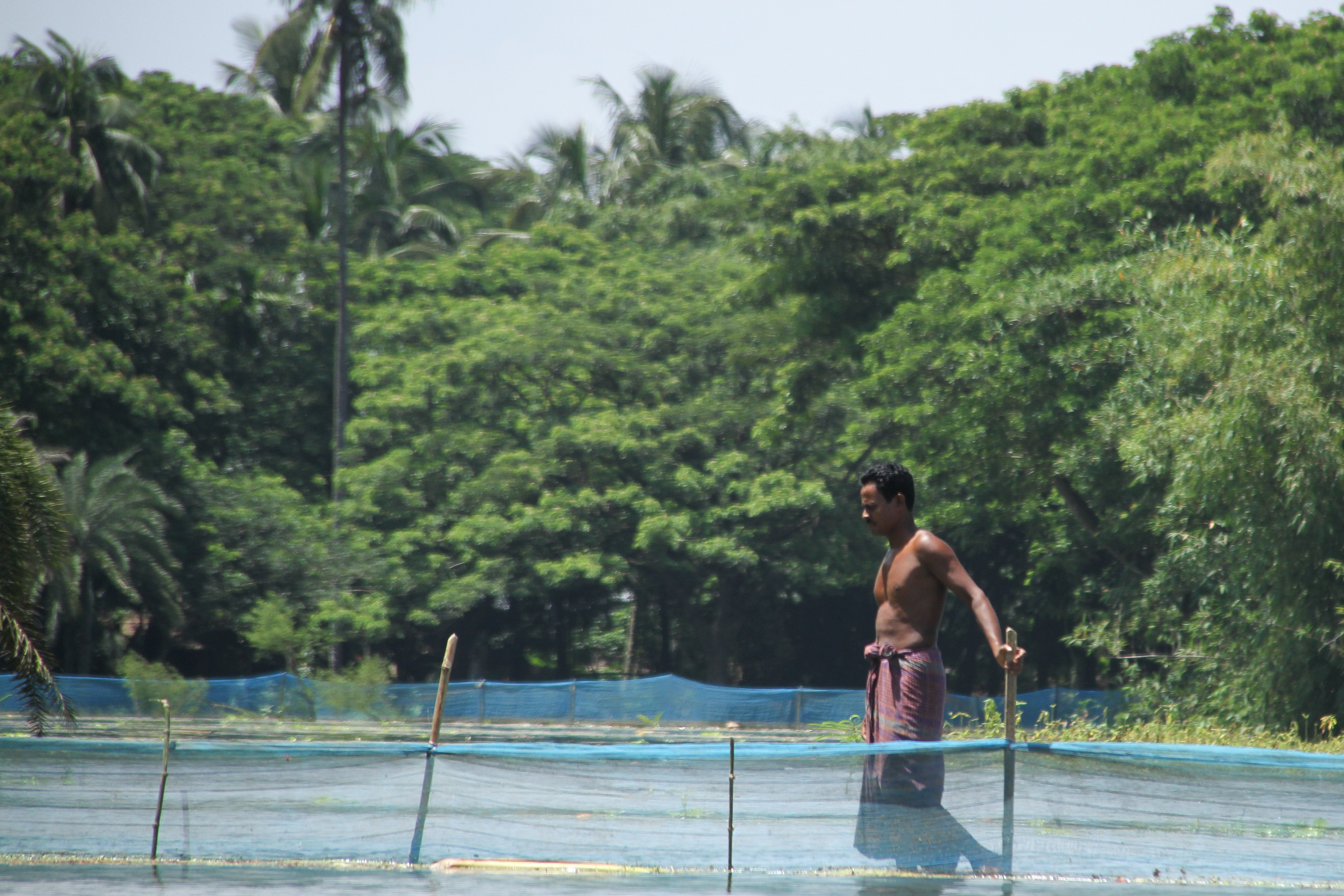When Rivers Breathe Again: How Bangladesh Reclaimed Its Delta
2025 LOCAL ADAPTATION CHAMPIONS AWARD FINALIST
In the mid-20th century, Bangladesh’s southwest coast was transformed by human ambition. Between the 1960s and ‘90s, the government—with support from international advisors—built hundreds of “polders”: low-lying areas enclosed by earthen embankments with sluice gates, modeled loosely on Dutch flood protection systems. The goal was straightforward: keep out the tide, stop flooding and saltwater intrusion, and open up fertile land for agriculture.
At first, the polders delivered. Crops flourished behind the embankments. Farmers planted multiple harvests per year. Freshwater ponds and irrigation looked far more reliable.
But there was a catch: Bangladesh’s rivers carry massive volumes of sediment every year. When tidal flows were blocked, that sediment—fertile and energizing—stopped being deposited on the floodplains. Instead, sediment piled up in riverbeds and outside of the polders. Rivers silted up, channels shallowed. The land inside the polders, no longer replenished with silt, slowly sank relative to the rising riverbeds and coast.
Over time, the very protections meant to safeguard people became a curse. Monsoon rains could no longer drain properly; rivers unable to carry water away due to siltation caused flooding inside the polders. Waterlogging became chronic: entire fields, homes, roads, even schools remaining submerged for months or longer. Saline intrusion increased, damaging crops and drinking water. Rural livelihoods that had seemed secure were undermined. Many people, especially women, children, and the poorest, lost mobility, income, and hope.

Releasing the Tide
Local communities refused to stay helpless in the face of systemic failure. Fisherfolk, farmers, NGOs and community leaders alike began pushing back—not with new embankments, but with a rediscovery of traditional practices. One of the boldest proposals was to cut through the embankments and allow tidal rivers to flow back in, periodically. Let the water in, let the sediment settle—and let nature do its work. This approach is now known as Tidal River Management (TRM).
With support from Uttaran, communities have revived their traditional practice of Dosher Badh or Oshtomashi Badh. Sections of embankments are deliberately breached so that tidal flows can enter the depressed lands behind them (beels). During high tide, silt-rich water flows in; during low tide, water drains out, leaving much of that sediment deposited inside. That gradually raises the land levels.
The rivers benefit too: channels are “flushed”—their beds scoured out because the tidal prism (volume of water moving in and out) is restored. Rivers deepen, improving drainage.

Lives Transformed
The changes from TRM are powerful—and surprisingly rapid in many cases.
In Beel Bhaina, Jessore district, for instance, locals breached the embankment in 1997. By around 2000 most waterlogging had receded. Land levels rose by about a meter across large parts. Farming returned. Homes formerly submerged for months at a time were again usable. Alongside land rise, rivers regained depth; navigation improved; salinity intrusion dropped; agricultural productivity increased. People who had left the area began to return.
These are not isolated successes. TRM has been trialed in several beels (Bhaina, Kedaria, Khukshiya, Pakhimara) and the positive livelihood changes—better crop yields, restored land, less stagnant water—have been well documented. In one study, ~1.5 lakh hectares (150,000 hectares) of waterlogged land freed, and in many places land elevation increased by two to three feet (≈60–90 cm) over several years.


Where once people were victims of large-scale engineering projects that overlooked local realities, now they are defining what adaptation looks like. They are harnessing centuries-old river knowledge, ecological rhythms, and natural sediment flows to rebuild what was lost: arable land, safe homes, accessible roads, clean water, and hope.
TRM has also begun changing the national conversation. The Bangladesh Water Development Board now formally acknowledges TRM as a sustainable method of river and delta management. The policy environment is shifting: TRM is included in national planning for climate resilience and delta management.
This story is a powerful example of how engineering solutions that are not rooted in local ecological realities can backfire catastrophically. It demonstrates the power of combining indigenous/local agency with science and policy to craft solutions with multiple benefits, and offers a model for many deltaic, coastal, and riverine communities globally facing rising seas, subsidence, and changing flood regimes.